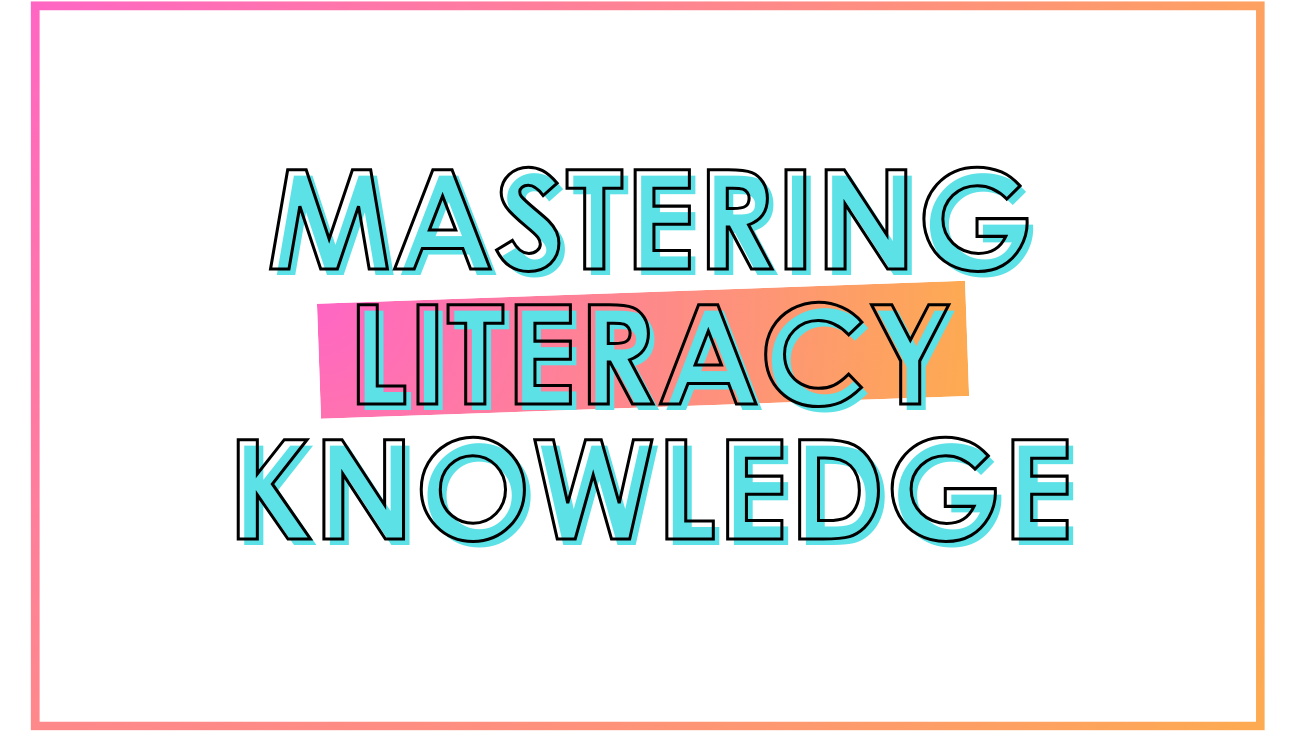
Mastering Literacy Knowledge: Helping Middle Schoolers Navigate Text Structures and Features
Literacy knowledge refers to students' understanding of how different texts are structured and organized. This includes:
- Print knowledge – Understanding basic conventions like reading from left to right and top to bottom.
- Genres and text formats – Recognizing differences between fiction and nonfiction, essays vs. poetry, and how various texts serve different purposes.
- Text structures – Identifying common organizational patterns such as problem-solution, cause-effect, and compare-contrast.
- Text features – Navigating elements like headings, captions, tables of contents, glossaries, and indexes to extract meaning efficiently.
Developing literacy knowledge helps students engage more deeply with texts, improving their comprehension and retention.
Why Teach Text Features Explicitly?
Many students glance over text features rather than using them as comprehension tools. How often have you seen students skip captions or ignore diagrams? This oversight can lead to gaps in understanding. By explicitly teaching text features, we can equip students with strategies to actively engage with the structure of a text rather than passively reading it.
Text features include:
- Headings & Subheadings – Guide readers through sections.
- Captions – Explain images and diagrams.
- Table of Contents & Indexes – Help locate information quickly.
- Visual Aids (Graphs, Charts, Maps, Diagrams) – Present information clearly.
- Types of Print (Bold, Italics, Highlighting) – Emphasize key terms and concepts.
Even if text features were introduced in earlier grades, middle and high school teachers must revisit them to ensure students use them effectively.
Engaging Classroom Activity: Text Features Scavenger Hunt
To make literacy knowledge interactive, try this Text Features Scavenger Hunt! This low-prep, high-impact activity helps students identify and analyze text features within their textbooks. Bonus: It works across subjects, making it a great cross-disciplinary exercise!
What You Need:
- Student textbooks (physical or digital)
- Scavenger hunt questions (customized for your students’ texts)
Step 1: Prep & Review
Before starting, review essential text features with your students. If you have an infographic, video, or anchor chart, even better! Focus on key features like:
- Headings & Subheadings
- Table of Contents & Index
- Diagrams, Captions, and Visual Aids
- Bold & Italicized Terms
- Glossary Definitions
Step 2: Create Your Scavenger Hunt
Decide whether your students will use the same textbook or different ones. This determines how specific your questions can be.
If all students use the same textbook, questions can be detailed:
- Find the Table of Contents. On what page does the chapter on plate tectonics begin?
- Locate a diagram of the Earth's layers. What does the caption say about the lithosphere?
- Identify two bolded terms related to plate tectonics and define them.
- Use the index to find pages discussing mid-ocean ridges.
If students use different textbooks, make the questions general:
- Find a chapter that interests you. What is its title, and what page does it start on?
- Locate a heading and subheading in any chapter. What are they?
- Find a diagram. What does it illustrate?
- Identify a bolded term and explain why it’s important in the text.
Step 3: Scavenger Hunt Time!
- Students search their textbooks to answer the scavenger hunt questions.
- They can work individually or in pairs.
- Add a competitive element by setting a timer or offering small incentives for the first team to correctly complete the activity.
Step 4: Review & Discuss
After the hunt, review responses as a class and discuss:
- What did they learn about text features?
- How did these features help them locate information more efficiently?
- Why is it important to actively engage with text features while reading?
Final Thoughts
Teaching literacy knowledge is an investment in creating stronger readers. By helping students understand how texts are structured and how to use text features effectively, we set them up for greater comprehension, critical thinking, and academic success.
Try the Text Features Scavenger Hunt in your classroom and watch your students gain confidence in navigating their reading materials. Let us know how it goes!
To learn more about this topic, check out our podcast Teaching Middle School ELA.
Literacy Knowledge
LEARN MORE ABOUT OUR COMPREHENSIVE ELA CURRICULUM!
The EB Teachers’ ELA Portal is an exclusive membership for Middle School ELA Teachers in Grades 5-8 who are ready to streamline their planning process — while increasing student engagement and learning outcomes (and having fun along the way)!
Ready to feel good about teaching again?
*School and District Partnerships are also available at https://schools.ebacademics.com/eb-all-access*

